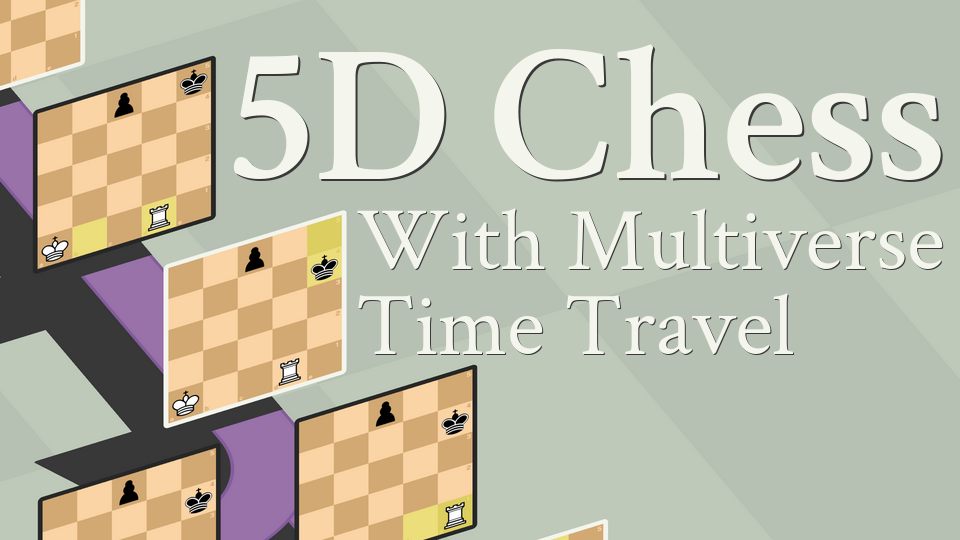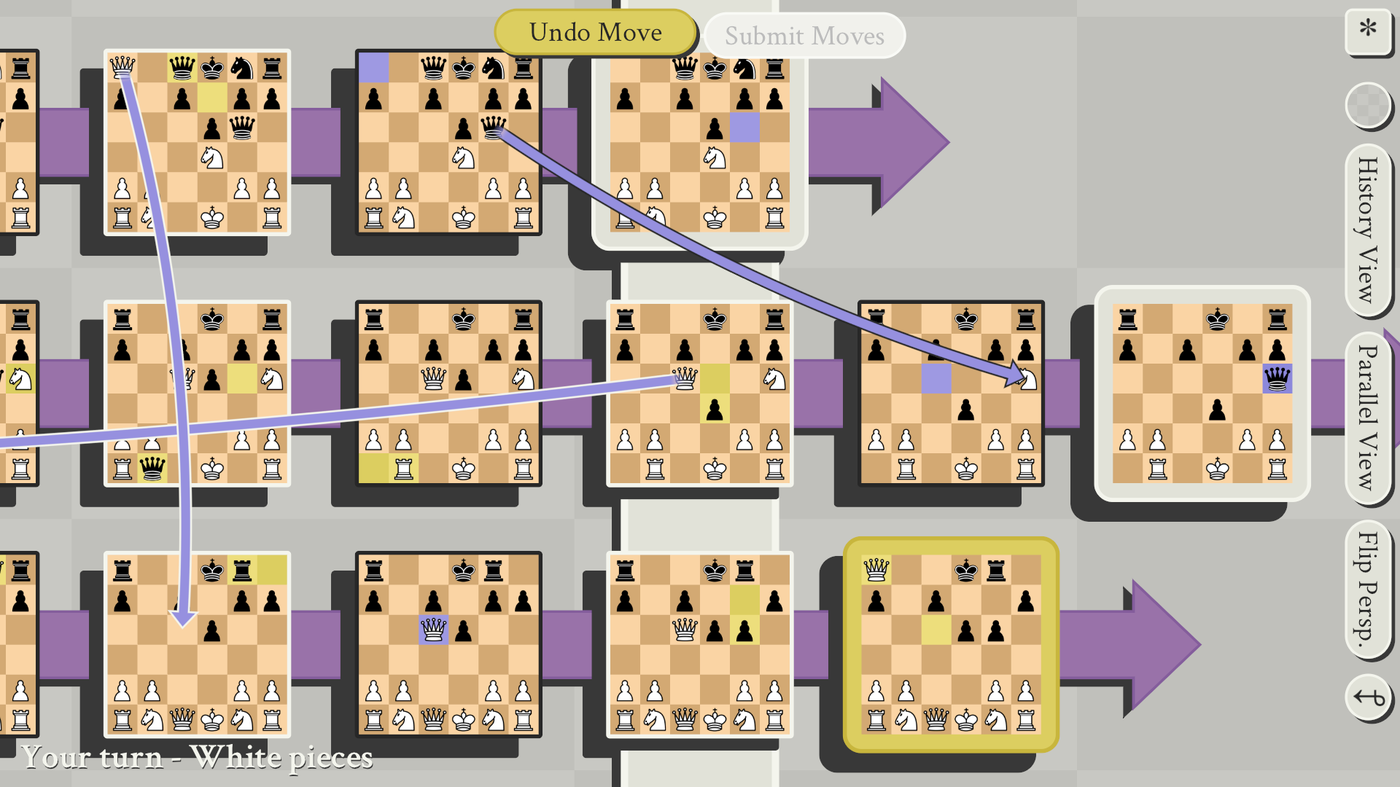Chess that even grandmasters find hard to comprehend

Almost everyone has heard of or played the game chess. A board consisting of sixty-four black and white squares, with each player taking turns to move pieces, trying to capture the other’s king. Several versions of the game have expanded upon the classic version of chess and altered the rules slightly to add a bit of a spin to it, like making the game three or four-player. The version that takes the throne for the most wacky alteration of rules is the game 5D Chess with Multiversal Time Travel. 5D Chess with Multiversal Time Travel was released on the Steam Marketplace in June of 2020 and broke everything that was chess.
At first glance, it seems like the original game. There is no unique board, and at first, the pieces move they normally would. But once the game progresses, each piece gains more moves: they can travel to past boards or create an entire new branch of a board, which would have an effect on the current game as a whole. The whole idea of this version is that pieces would have access to the fourth and fifth dimension, time, and parallel universes. The pieces access time by being able to move to past states of the boards. Another feature time has is that pieces can check past versions of the king, which can lead to some interesting checkmates. As for how pieces use parallel universes, whenever a piece moves to the past, a new board is created and a new branch is added to the timeline of all the branches. Pieces are allowed to jump to different boards within their own timeline and then play in that timeline.

It gets even more complicated. Along with their original moves each piece can now move to the past or a different branch of the timeline. For instance, rooks can move to a past spot or onto a different branch of the timeline, keeping its place on the board the same, while a king can move off its branch to another branch, leaving the current branch devoid of a king. Another feature is that a player can make multiple moves at once. This is because there are current timeline and past timelines; the player who is playing in the current timeline can make moves until their boards in the past are caught up with the present, or until they make a move that affects the most current timeline.
While this is a very basic definition of the rules and how the game is played, it would take a much more detailed essay, one in which I do not think I am even qualified to write, in order to explain all the rules and the best strategies. However, being an avid fan of normal chess and after playing 5D Chess with Multiversal Time Travel many times, I can say that this game is well worth the money. Playing the game may be confusing, but seeing how different moves can lead to some new type of checkmate or weird timeline is extremely exhilarating. There is an extremely steep learning curve, one that I'm not sure ever ends, but playing against your friends is a great way to start learning. The fun happens for the sole reason that, most likely, neither you nor your opponent will understand what is going on. The game also has built in puzzles to help you learn how each piece moves, which taught me the basics when I started playing. There are also a number of guides in the game menu that help give strategies and define all of the pieces.
For those who want their mind to hurt severely while playing what is normally a relaxing game, I highly recommend you pick up 5D Chess with Multiversal Time Travel on the Steam Marketplace for $11.99.

 On-Campus Event
On-Campus Event